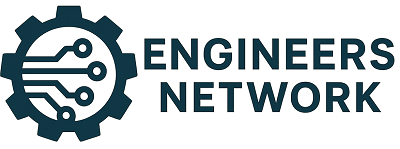Process engineers largely focus on the manufacturing of products by transforming raw materials into everyday products on an industrial scale, striving for a safe, cost-effective and sustainable manner to do so.
In a manufacturing environment, process engineers design, implement, optimize and control the industrial processes. In a medical or pharmaceutical environment, the processes can be chemical or biochemical. Examples of industries that use this discipline are food, nuclear, mining and chemical manufacturing.
The job of the process engineer can be likened to that of a chemical engineer. However, process engineers use their knowledge of chemical engineering to design the correct equipment required for the manufacturing process. For example, when planning a processing plant, they will use their knowledge of the effects of temperature on a particular chemical in order to design the correct method and equipment for their particular manufacturing process. So, their focus is less on the chemistry side of things, and more on physics and mathematics.
The differences between process engineers and manufacturing engineers
The role of the process engineer is often confused with that of a manufacturing engineer, but the differences in their training set them apart. Process engineers are usually trained in chemical engineering. They specialize in the design and optimization of industrial processes. Manufacturing engineers are often industrial or mechanical engineers with additional training in supply chain management and operations.
These differences determine the type of industry they work in:
- The process engineer is employed in a ‘process’ or ‘continuous flow’ environment, manufacturing items from a given formula or recipe. Examples of this are cosmetics, drugs, vegetable oils and gasoline.
- The manufacturing engineer assembles items that can be counted or itemized, such as car components and electronic equipment.
- The equipment used in these two environments differs considerably.
- Process engineers use tubes, pipes, boilers, temperature gauges, vats, pumps and distillation columns.
- Manufacturing engineering involves robots, assembly lines and packaging machines.
That said, the two disciplines can work side by side, as they often do. In large companies, process engineers may perform in a small niche, but in smaller companies, they will be responsible for a large variety of tasks.
Responsibilities
Process engineers design processes and equipment for manufacturing, providing strategic oversight into the manufacturing processes being used, and regularly monitoring and test equipment being used. Their responsibilities include:
- Research, concept development, feasibility and ergonomic studies.
- Designing and developing new equipment and plants (this is known as plant design).
- Handling quotes, estimation and procurement processes.
- Development, configuration, and optimization of the manufacturing processes.
- Upgrading existing processes and plants, including the design and testing of new processes.
- Performing risk assessments of processes and equipment in use.
- Carrying out process simulations for testing purposes.
- Managing quality control procedures.
- Ensuring compliance with safety and manufacturing protocols and regulations, both internal and external.
- Collecting data for reports and presenting findings to senior management.
- Managing time and cost constraints of the process.
- Minimization of waste and disposal thereof in a sustainable manner.
- Managing process resources.
- Providing process documentation and operating instructions.
A typical project will start with a process flow diagram (PFD), whereby the process engineer identifies material flow paths and storage equipment that will be needed, flow rates, and a list of pipes and conveyors, and their material properties: velocity, density, particle size distribution, pressures, temperatures, materials of construction, and unit operations.
Based on the PFD, a piping and instrumentation design (P&ID) is created. This is a key step in the process, where the distinction is made as to how the material will be stored and moved. More complex and more specific, the P&ID displays the actual process by means of a schematic diagram. This diagram gives a proposed layout that can be viewed from overhead or from an elevation side view, and is ultimately used for creating the system operating guide. Graphical software tools are available to assist in this design phase, necessitating some computer experience and training on specific software.
From this exercise, everything else flows: the definition of the scope of the project; the cost estimate; and a time schedule for engineering, procurement, fabrication, installation, commissioning, and the ongoing project.
Once finalized, this scope definition is sent to the stakeholders and customers, who provide feedback.
The scope is changed to accommodate the constructive feedback. Additional cost estimates are made, and schedules are developed for funding approval.
Once approved, the project is handed over to the project management team, who plot the processes and personnel responsible, and the timeframes.
Work environment
Process engineers spend a lot of their time in an office or laboratory, but may be required to monitor or direct the manufacturing process. They generally have a 9 to 5 full-time job, and travel is often involved, between plants or further afield, during the investigation process.
Sectors that will typically hire process engineers include:
- Pharmaceutical and biopharmaceutical manufacturing.
- Cosmetics.
- Chemical manufacturing, including cleaning items.
- Petrochemical manufacturing.
- Food, including dairy.
- Alcoholic beverages.
- Mineral processing.
With sound knowledge and experience, the process engineer can move into a consulting role in time. Process engineer roles include:
- Process engineering in renewable energy: With the range of regulatory and technical issues relating to this industry, proven expertise is essential. Renewable energy projects include converting biomass to liquid fuel, ethanol extraction, flue gas carbon dioxide removal, carbon capture plants and systems, absorption columns, scrubbing systems, ethanol distillation, and more.
- Process engineering in mining: The process engineer is responsible for overseeing the extraction and removal of metals and non-metals from the ore, and transforming low-value metals and minerals into a form that can be recycled into other products.
- Process engineering in the food industry: The process engineer is responsible for designing and creating systems for new food products and optimizing the processes for existing products. An example of optimization in the food industry is the recent innovation of bacteria control methods in food. In the past, heat was used to kill bacteria, making food safe for consumption, but destroying important nutrients in the process. Innovation in this industry has included the use of emerging technologies such as high-pressure methods, ultraviolet light, ozone, electric fields, magnetic fields, and ultrasound waves in the processing of foods, maintaining the flavor and nutritive value of the food.
- Process engineering in electronics: A semiconductor process engineer is responsible for developing small-size electronic circuits and other computer devices. In addition to the engineering skills listed below, electronic engineers need dexterity and good eye-hand coordination.
Skills
To thrive in the process engineering environment, you need to be analytical, have critical thinking skills, and enjoy solving problems. Your mathematical bent and attention to detail will be a requirement, as will your knowledge of commercial and business practices in your particular industry. Some of the skillsets you will need are:
- Strong management and leadership skills, which are important for the success of the project.
- Engineering expertise to design and commission equipment.
- Project management skills; the ability to build teams and get them to commit to the completion of a successful project; time and budget management.
- Have a working knowledge of computer-aided tools such as 3D modeling used in the various planning, project management, simulation, and design areas, and presentation software for management reporting.
- Sufficient financial knowledge to understand and assist with feasibility studies and project budgets.
- The ability to read and interpret technical drawings, both mechanical and electronic.
- Familiarity with health and safety regulations relevant to the industry.
- Strong interpersonal and motivational skills for dealing with people on all levels.
- The ability to work under pressure and to be available to colleagues at all times.
- Critical thinking and analysis skills, proactively identifying problems and finding solutions.
- Excellent communication skills for explaining procedures, presenting to management, and submitting regular progress reports.
- Creativity and innovation, from the design phase through testing, to completion. This is ongoing to come up with the most efficient solutions.
- Attention to detail.
Career path
A minimum requirement for the position of process engineer is a graduate degree in chemical, industrial or manufacturing engineering: a BSc or a BEng degree, though a postgraduate MSc or MEng postgraduate degree in any of these subjects would be ideal. If you are studying for a postgraduate degree, then it is likely that some experience in your chosen field will be a prerequisite for the course.
As a part-time post-graduate student, you could possibly find employment as an intern process engineer, gaining experience in the field while studying.
If you have a graduate degree in engineering with one of the above majors and two years’ working experience and are considering a specialty qualification in the field of process engineering, then further studies in engineering management would enhance your career prospects, elevating you to a level where your expertise in industry-oriented management and leadership would be invaluable in your chosen industry.
To this end, consider a master of engineering management online through uOttawa, which will give you the combination of engineering and management skills that will assist you in obtaining your professional goals.
Based on the ‘Responsibilities’ section of this blog, it can be seen that the process engineer is going to need specific training in operations management, project management and product innovation, as well a strong understanding of the computer-based tools necessary for the job.
In addition to the core skills of a management engineering degree, the training should equip you with ‘soft’ skills such as the ability to give constructive criticism, to communicate effectively, to think strategically, and to inspire and motivate your team members.
The managing process engineer is involved in every step of the process, taking the project from the planning phase, through design and development, testing, and the final commissioning and operation.
Typical projects
A typical project that a process engineer manager would undertake includes:
- Designing and developing a manufacturing process, specifying the layout and equipment needed, and getting involved in the procurement or building process.
- Project managing the construction phase.
- Modifying current processes and equipment.
- Overseeing processes, and optimizing when necessary.
- Overseeing quality assurance and compliance within product and industry regulations.
- Regular testing and assessment of equipment, and maintenance.
- Ensuring that a regular and accurate daily, weekly and monthly reporting system is in place.
- Risk assessment in terms of people, products and environment.
- Analyzing financial reporting such as monthly costs, profits and expenditure.
- Troubleshooting and solving problems in the manufacturing area.
- Creating standard operating procedures.
- Ensuring the safety of the employees.
Large project management companies exist with a vast range of expertise, offering specialists in all of the above services. It may make sense for a company to employ a team to do the job. This will include training internal staff to manage the manufacturing process once the plant has been implemented.
As a relatively new discipline, process engineering supports the development of industries across the world, striving for economic and technological sustainability during both the development phase and the resulting manufacturing processes.
The sooner companies switch to process engineering methods, the sooner they will be able to optimize their processes, thereby reducing costs, increasing production, and possibly enhancing the quality of their products.
Process engineers play a vital role in many industries. Like other engineering roles, process engineering offers plenty of scope for continued learning and professional development. It is a worthwhile career, one that is creative, exciting and intellectually stimulating.




Leave a Reply